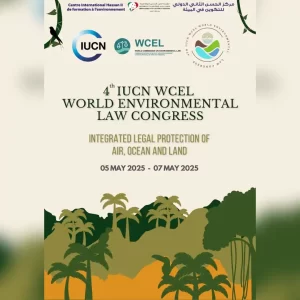- After the collapse of the Union of Soviet Socialist Republics, the Caspian, the largest lake on the planet, became the center of regional and even international debates. The emergence of new states bordering the Caspian Sea in global society poses the problem of the legal status of this area. For several years, the legal status of the Caspian Sea was defined by the treaties of 1921 and that of 1940, signed by the two border states, the Soviet Union and Persia, then Iran. However, the emergence of new states bordering the Caspian Sea – Azerbaijan, Kazakhstan and Turkmenistan – and, in particular, after knowledge of the possibilities of offshore exploitation of significant petroleum resources has called this status quo into question. The uncertainty of the legal status of the Caspian Sea and the concerns and negotiations between the States concerned for the delimitation of natural resources have hampered the priority of protecting the environment of the Caspian Sea.
- The richness of the Caspian Sea in flora and fauna constitutes a unique ecosystem. The aquatic environments of the Caspian Sea represent a natural resource-rich in fish, birds and living environments. At the same time, it is environmentally very vulnerable.
- It is vulnerable on an ecological and environmental level, because, first of all, the revelation of the petroleum resources in this region and an exploitation of these resources towards regional and world market quickly became major causes of marine pollution. In fact, the production of hydrocarbons, transport, transformation and consumption are in general the four essential phases likely to cause maritime pollution.
Furthermore, the marine biological resources of the Caspian Sea are endangered. In fact, unauthorized practices, such as poaching and illegal fishing, trafficking and intensive fishing, pose a significant danger to biodiversity and the fish stocks of the Caspian Sea.
- The fight against marine pollution and the conservation of wildlife appear today as an essential field of international environmental law, this law which is made up of all the compulsory and non-compulsory international legal rules. A. Kiss and J-P. Beurier has demonstrated that the objective of international environmental law is to protect the biosphere against significant deterioration and imbalances that could disturb its normal functioning.
- Concerning the protection of the environment of the Caspian Sea, international law is playing an increasingly significant role in this area. However, the question of the legal status of this body of water is not finilized.
- International environmental law, like general international law, is an evolving law. It has developed mainly since the Stockholm Declaration in 1972, after the appearance of treaties, regional and international conventions that were legally binding and the emergence of numerous legally non-binding recommendations, declarations and action programs.
- In the current State of international environmental law, as a new branch of international law, certain aspects and some sectors of the biosphere are considered as an area to be preserved and protected by various provisions. We can note, for example, marine pollution, soil and forest protection, air pollution.
- On the other hand, as far as the protection of international lakes is concerned, there is currently no general international regulation in this area. However, the significant development of international environmental law is now leading to the emergence of international standards applicable to international lakes. This development is also considerable, at the international level, by some global conventions in this field, such for example the 1997 New York Convention on the law relating to the uses of international watercourses for purposes other than navigation.
- For all these reasons, it can be considered that “the legal aspects of protecting the environment of the Caspian Sea” constitute a subject which is both very diverse and essential. This is a very different subject because the legal status of this marine area is not yet defined, and the question arises whether, legally and in terms of international law, the Caspian is a sea or a lake. But, at the same time, it is an important subject because the environment and the ecosystem of the Caspian Sea are threatened by many problems and pollution.
- Furthermore, the institutionalization of international environmental protection offers a global coordination framework for the management of financial and technical assistance to regional cooperation permanently in the Caspian region. An increasing autonomy of the internationalized approach can be a sign of the effectiveness of international protection of the environment of the Caspian Sea.
- In connection, can we envisage an internationalization of the protection of the environment of the Caspian Sea, as is the case in the international protection of human rights, in particular as regards the application of international rules and control techniques? As such, could international environmental law manage to manage ecological problems on a global scale, based on an internationally integrated regime for the protection of the environment, in parallel with that of citizens’ rights? The origin of this proposal is based on the one hand, on the need for environmental protection even if this action is contrary to the will of particular States and, on the other hand, on the idea according to which the functions environmental conditions (particularly with regard to monitoring and control) require the creation of an international body similar to that of the United Nations High Commissioners for Human Rights and for Refugees.
- The normative and institutional development of international environmental law, inspired in particular by the principles of sustainable development and common but differentiated responsibilities, confirms the existence of this trend, even if it is not until the new contribution to the development of law international environment in the 21st century.
- In any case, the two international legal instruments concerning the protection of international watercourses and lakes: the 1992 Helsinki Convention on the protection and use of transboundary watercourses and international lakes [2] and the 1997 New York Convention on the Law of the Non-Navigation Uses of International Watercourses [3] is decisive in this matter, although at present there is no comprehensive international regulations for environmental protection in general, and the protection of international lakes in particular. It is true that harmonization of the rules of international environmental law can offer greater efficiency in the management and international protection of the environment.
- In the current state of international law marked by the globalization of law and the emergence of a law of globalization, the action of the State, as the main subject of international law, is limited to the scale overall. Two phenomena have accentuated this limitation. On the one hand, the abandonment of exclusive powers in favour of international intergovernmental organizations and regional inter-state institutions. On the other side, the emergence of private individuals (non-governmental organizations and individuals) on the international scene has broken the traditional logic of international law.
- In this context, it is not too early to speak of the existence of Jus cogens rules in international environmental law, in particular as regards the controls on the prohibition of causing transboundary harm and fair dealing and reasonable territory. The protection of certain natural elements, and even of nature itself, is increasingly perceived as a higher fair value. It is therefore understandable that the International Court of Justice (ICJ) in the cases mentioned above has insisted on the fact that environmental protection and the principle of the prohibition of causing transboundary damage can be considered as superior legal values. Likewise, the emergence of the concept of the common natural heritage of humanity in international law confirms the existence of a new conception of the legal nature of environmental protection.
We now realize to what extent the Caspian Sea can be considered as a regional natural heritage whose conservation and the riparian States and their populations must guarantee management. Consequently, States should no longer find themselves as sovereign owners, but as agents responsible for coordinating the use of shared natural resources equitably and reasonably for the present and future interest of humanity.
- However, an interdependence between peace, development and the environment must be taken into account for effective and efficient protection of the Caspian Sea. The involvement of certain States not bordering the Caspian Sea in this region has been shown to constitute a threat to international peace and security. Thus, the uncertainty of the legal regime of the Caspian Sea favors a context of disagreements between the riparian States. For this reason, these States must strive to actively negotiate in order to redefine their legal status and establish a regional framework for the protection of the environment of the Caspian Sea.
References:
- Dupuy P.-M., “Rights of treaties, codification and international responsibility”, AFDI, 1997, p. 7-30
- Dupuy P.-M., “fault of the State and“ internationally wrongful act ””, Revue Droit, n ° 5, 1987, p. 51-63
- Dupuy P.-M., “International environmental law and state sovereignty: results and perspectives”, in Academy of International Law, The future of international environmental law, Symposium 1984, Nijhoff, Dordrecht / Boston, 1985, p. 38
- Kiss A., “Is public participation in decision-making compatible with parliamentarism? “, Email. Klébes, Kluwer, 1999
- Kiss A., “The pollution of the Rhine: continuation (and end?)”, AFDI, 1983, p. 774
- Kiss A., “The protection of the sea in the United Nations Convention on the Law of the Sea (December 10, 1982)”, in Marine environment law: recent developments, Proceedings of the symposium organized on November 26 and 27 1987 at the Faculty of Law and Economics of Brest, Paris, Economica, 1988, p. 24
- Kiss A., “Framework treaties: a legal technique characteristic of international environmental law”, AFDI, 1993, p. 793
- Poorhashemi S.-A. “The Caspian Sea and the regional mechanism for environmental protection”, Iranian specialized journal Pegah, n ° 65, September 7, 2002, p. 14
See as well
- Find the concept of environmental law “Caspian Sea” in international law
- Find the concept of environmental law “Caspian Sea” in the legal internet
- This article was published:
Please see the original version in French: La mer Caspienne en droit international de l’environnement: Approche pluridisciplinaire (Omn.Pres.Franc.) (French Edition) (French), by Seyed Abbas Poor Hashemi (Author)





